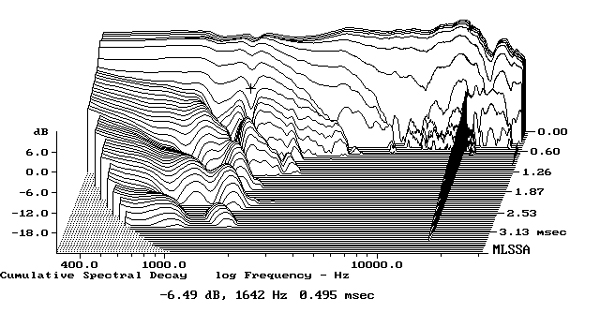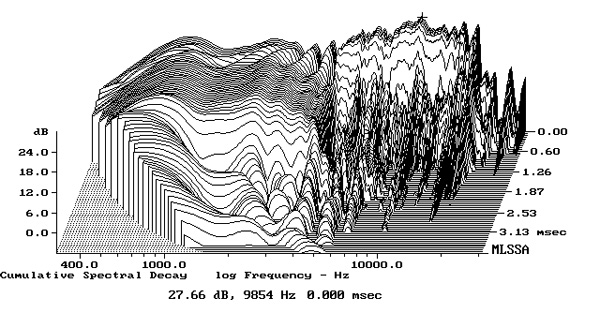Sorry, but this is not correct either!
Let's consider two ideal wideband chassis (minimum phase, no excess phase). The following step responses are available for these:
A)
View attachment 111095 B)
View attachment 111097
Chassis A, there the voice coil comes to rest after about 2-3ms.
Chassis B, there the damped oscillation is not in a constant state even after 4ms.
The differences are caused by the different frequency transmission range of chassis A and B:
A)
View attachment 111233 B)
View attachment 111234
Only if the frequency transmission ranges of the chassis are completely identical, one could read off conclusions about the decay behavior of the chassis. This is unlikely to be the case in reality when comparing loudspeakers.
In order to be able to make a statement about the decay behavior of a loudspeaker (to get a "value if a speaker is precise"), the measured impulse response is converted into the cumulative spectral decay (with time-based or oscillation-based axis).
In this way, it is much easier to make statements about the decay behavior of loudspeakers - provided that reflections are suppressed via gate.
The same applies to the evaluation of multi-way loudspeakers on the basis of the step response.
Let's consider two ideal two-way loudspeakers with identical filter order but one with a crossover frequency of 5kHz (C) and one of 1.5kHz (D):
C)
View attachment 111257 D)
View attachment 111259
I don't know what the sources for your conclusions were, but if someone wants to tell you in the future that speaker C is more precise and can reproduce transients better because, for example, the woofer "reaches the maximum" faster in the step response, you know that this is nonsense.
Due to the lower crossover frequency of speaker D, there the oscillation periods of the woofer ("starting" at 1.5kHz) are longer, hence the slower rise and the "later" maximum.
On the subject stereo phantom image, width, elevation, spaciousness, envelopment,... you will find much useful information in Floyd Toole's book "Sound Reproduction" ... and no, you cannot infer the stereo image width established by loudspeakers based on the step response
.






